Fall Harvest Moon
 The tree of life, the tree of immortality guarded by the angel with the flaming sword; the tree itself still growing in paradise, concealed by language, by our senses, by the everydayness of our lives; the path back to the garden often forgotten, the exile from paradise a separation so profound that we no longer know the location of the trail head and even harder, we no longer have a desire to search for it.
The tree of life, the tree of immortality guarded by the angel with the flaming sword; the tree itself still growing in paradise, concealed by language, by our senses, by the everydayness of our lives; the path back to the garden often forgotten, the exile from paradise a separation so profound that we no longer know the location of the trail head and even harder, we no longer have a desire to search for it.
Metaphor? Of course. But in these three words lie a trap for the unwary, a trap in which I allowed myself to get caught and held, a mindhold trap. My life seems like a sine wave of grasping, then losing the significance of metaphors.
When young, I felt the mystery behind the communion wafers and the grape juice at Alexandria First Methodist. At the tenebrae service, when we extinguished the little candles with their paper drip guards and the sanctuary went dark, I thrilled to the change from ordinary experience, sensed the power rolling over us as the memory of crucifixion and death came hurtling through the centuries to land in our small Indiana town, in the very spot where I sat.
The sunrise services held on Easter morning lit up my whole inside. The power of the tenebrae had been defeated and life did go on forever, death only a mistake, an illusion, misunderstood as a cruelty when in fact it was a gateway. I suppose on those days, repeated over many years, I had a glimpse of the path back to the garden.
My mother’s death, I think, shattered this instinctive faith. Those feelings occasioned by grape juice soaked squares of bread, darkness and the rising of the sun, were a true path and one I lost when the brutal reality of grief smeared the way.
But the memory of that way remained. So I moved up from the instinctive triad of netzach-hod-yesod, forced by fear and loss to skip the next triad chesed-gevurah-tiferet and go to the one easiest for me to access, hochmah-binah-daat. I know these hebrew words may mean nothing at all to you, I’m still at the base of a steep learning curve with them myself, but they do appear on the illustration above so you can see where they are on the tree of life.
In simple, but not simplistic terms, the triads are netzach-hod-yesod, the realm of instinctual behavior, chesed-gevurah-tiferet, the realm of emotions and hochmah-binah-daat, the realm of the intellect. Movement in the tree of life goes from the keter to malchut and back from malchut up to keter, so there is no real top or bottom, only different spots in an ongoing process of creation.
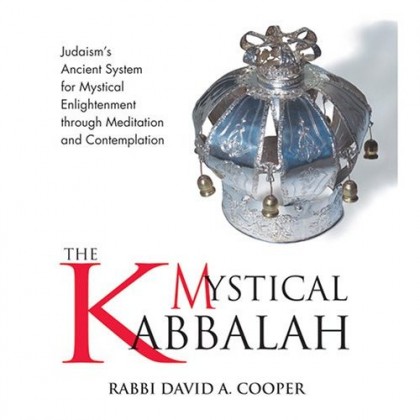 But here’s the trap. Metaphor, of course! I studied philosophy, religion, anthropology in college. Then, after a few years stuck in unenlightened instinctual behavior-the storied sex, drugs and rock and roll of the sixties and seventies-I moved to seminary. The trap tightened. I learned about the church, scripture old and new, ethics, church history. It was exhilarating, all this knowledge. I soaked it up. I remained though stuck in the intellectual triad, pushing back and forth between the polarity of intuitive wisdom, hochmah, and analytical thought, binah, often not going on to daat, or understanding. I learned, but did not integrate into my soul.
But here’s the trap. Metaphor, of course! I studied philosophy, religion, anthropology in college. Then, after a few years stuck in unenlightened instinctual behavior-the storied sex, drugs and rock and roll of the sixties and seventies-I moved to seminary. The trap tightened. I learned about the church, scripture old and new, ethics, church history. It was exhilarating, all this knowledge. I soaked it up. I remained though stuck in the intellectual triad, pushing back and forth between the polarity of intuitive wisdom, hochmah, and analytical thought, binah, often not going on to daat, or understanding. I learned, but did not integrate into my soul.
There was a time, after seminary, after ordination, as I groped my way around in the work of ministry, that I found the path again. It was in mystical traditions like the Jesus Prayer, or the use of lectio divina, contemplative prayer. I had spiritual directors who guided my prayer life and I meditated often, daily for years, went on private retreats for days at a time. In those years I found my way back to the netzach-hod-yesod triad, traveling again on the instinctual path formed so long ago.
The trap sprung another time, though, as I got better at my ministry, more able to apply organizational development paradigms to congregational life, more able to pull the levers of political power for the good of various purposes: affordable housing, unemployment policy, economic development for poor neighborhoods, fighting off corporate takeovers of those same poor neighborhoods, more able to navigate the internal politics of Presbytery life. I became stuck in malchut, the material world which we experience everyday. So stuck that eventually I could see nothing else and the path disappeared again.
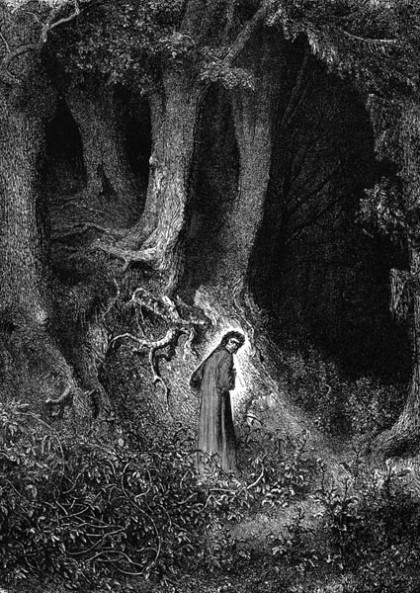 My heart knew I had gotten lost, in exile once again. In Dante’s words in Canto 1 of the Divine Comedy:
My heart knew I had gotten lost, in exile once again. In Dante’s words in Canto 1 of the Divine Comedy:
“In the middle of the journey of our life, I came to myself, in a dark wood, where the direct way was lost.
It is a hard thing to speak of, how wild, harsh and impenetrable that wood was, so that thinking of it recreates the fear. It is scarcely less bitter than death…
I cannot rightly say how I entered it. I was so full of sleep, at that point where I abandoned the true way.”
This time I knew I had to extricate myself from the subtle trap, get out of the thought world that had me lost in the dark wood, the direct way lost. It was a wild, harsh, seemingly impenetrable forest.
It was clear that for me the Christian faith had gotten muddled up with ambition, immersion in the world of power. And, most problematic of all, it had become part of the metaphor trap. The metaphor had gone stale, had become a barrier instead of a koan. Not the fault of the faith itself, but of my journey within it.
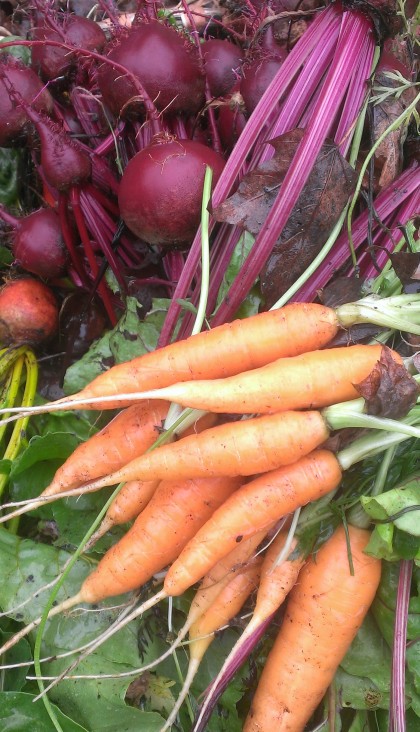 At the time of its crumbling another path had begun to open for me. Fiction writing emerged when, ironically, I began writing my Doctor of Ministry thesis. Instead of working on it I ended up with 30,000 plus words of what would become my first novel, Even The Gods Must Die. Irony in the title, too, I suppose.
At the time of its crumbling another path had begun to open for me. Fiction writing emerged when, ironically, I began writing my Doctor of Ministry thesis. Instead of working on it I ended up with 30,000 plus words of what would become my first novel, Even The Gods Must Die. Irony in the title, too, I suppose.
In the train of that shift came a decision to look into my Celtic heritage as a source for my fiction. While researching Celtic religion for the fantasy novels I wanted to write, I discovered the Great Wheel.
It grounded me. So to speak. My spiritual life became tactile, bound up in soil amendments, bulbs, corms, seeds, spades and hoes, fruit trees, raspberries and bees. And, of course, dogs. Always dogs.
Meeting Kate enabled me to move gracefully out of the ministry and into a pagan worldview. I was back in the netzach-hod-yesod triad, but now firmly attached to malchut, the queendom of this world.
Writing fiction found me exploring the chesed-gevurah-tiferet triad, having to reach into my heart for believable characters, story lines. Over the course of those years, the years since leaving the Christian ministry and now, I began to gradually integrate the triads, at least the three: intellectual, emotional and instinctual. The combination of family life, the Andover years, writing, and working as a docent at the MIA began to slowly weave them into my soul.
 Even so, I sat behind the barrier, the flaming sword, the metaphor trap. Beth Evergreen and Rabbi Jamie Arnold have started me on a journey back to where I began, immersed in the dark. Seeking for the light, yes, but happy now in the darkness, too. The Winter Solstice long ago became my favorite holiday of the year.
Even so, I sat behind the barrier, the flaming sword, the metaphor trap. Beth Evergreen and Rabbi Jamie Arnold have started me on a journey back to where I began, immersed in the dark. Seeking for the light, yes, but happy now in the darkness, too. The Winter Solstice long ago became my favorite holiday of the year.
When I left Christianity and took up my earth-bound spirit, I shut off access to the fourth triad, the one subsumed under keter: faith-joy/pleasure-will, and its source of energy, the ein sof, the infinite One, perhaps god in small letters. Today, as I write this, I’m more pagan than I’ve ever been, more embracing of the body, the mountains, the stars, the elk and the mountain lion, than any words from any source.
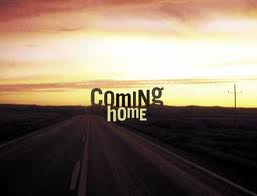 But. At Beth Evergreen I have begun to feel my way back into the fourth triad, the mystery I first encountered on the hard wooden pews in Alexandria, the one pulsing behind the metaphors of tenebrae, of crucifixion, of resurrection, and now of Torah, of language, of a “religious” life. I knew it once, in the depth of my naive young boy’s soul. Now, I may find it again, rooted in the old man he’s become.
But. At Beth Evergreen I have begun to feel my way back into the fourth triad, the mystery I first encountered on the hard wooden pews in Alexandria, the one pulsing behind the metaphors of tenebrae, of crucifixion, of resurrection, and now of Torah, of language, of a “religious” life. I knew it once, in the depth of my naive young boy’s soul. Now, I may find it again, rooted in the old man he’s become.





 Last week at mussar we had a fascinating conversation on the essential dourness of both Jewish and northern European cultures stimulated by the Norwegian concern that they had won too many medals in the winter Olympics. In both cases happiness, and by correlation, joy, are suspect. Why are you so happy? What makes you think that will last?
Last week at mussar we had a fascinating conversation on the essential dourness of both Jewish and northern European cultures stimulated by the Norwegian concern that they had won too many medals in the winter Olympics. In both cases happiness, and by correlation, joy, are suspect. Why are you so happy? What makes you think that will last?


 Thursday afternoon mussar. Talking about joy and sadness, how to cultivate joy. The middot of this month. Middot = character trait. Though the discussion was good, the time immediately afterwards was even better. I shared in vaad (speaking into the group, with no feedback. Concentrated listening.) about melancholy, being there now and having learned to listen to the melancholy instead of trying to fix it. Waiting it out.
Thursday afternoon mussar. Talking about joy and sadness, how to cultivate joy. The middot of this month. Middot = character trait. Though the discussion was good, the time immediately afterwards was even better. I shared in vaad (speaking into the group, with no feedback. Concentrated listening.) about melancholy, being there now and having learned to listen to the melancholy instead of trying to fix it. Waiting it out.
 Last night Kate and I had adult Hebrew, then, an hour later, tikkun middot havurah. This is the third of three mussar related times during the month, a once a month gathering for those who’d like to study mussar but can’t make the Thursday afternoon class. The topic was zerizut, or the middot (character trait) of enthusiasm.
Last night Kate and I had adult Hebrew, then, an hour later, tikkun middot havurah. This is the third of three mussar related times during the month, a once a month gathering for those who’d like to study mussar but can’t make the Thursday afternoon class. The topic was zerizut, or the middot (character trait) of enthusiasm. Me, I was just tired. So, the question is, is it worth upsetting my normal rhythms? Yes. Yes, it is. No, not because I’m converting, still not interested. But, I have come to believe that Judaism, at least as practiced in this small mountain synagogue, is about helping humans be better in this life and to use this life to make things better for the other, be the other human or animal or a planet. Synchs up pretty well with my own journey, this ancientrail that has wound from Oklahoma to Indiana, Indiana to Wisconsin, Wisconsin to Minnesota and now, Minnesota to Colorado.
Me, I was just tired. So, the question is, is it worth upsetting my normal rhythms? Yes. Yes, it is. No, not because I’m converting, still not interested. But, I have come to believe that Judaism, at least as practiced in this small mountain synagogue, is about helping humans be better in this life and to use this life to make things better for the other, be the other human or animal or a planet. Synchs up pretty well with my own journey, this ancientrail that has wound from Oklahoma to Indiana, Indiana to Wisconsin, Wisconsin to Minnesota and now, Minnesota to Colorado.


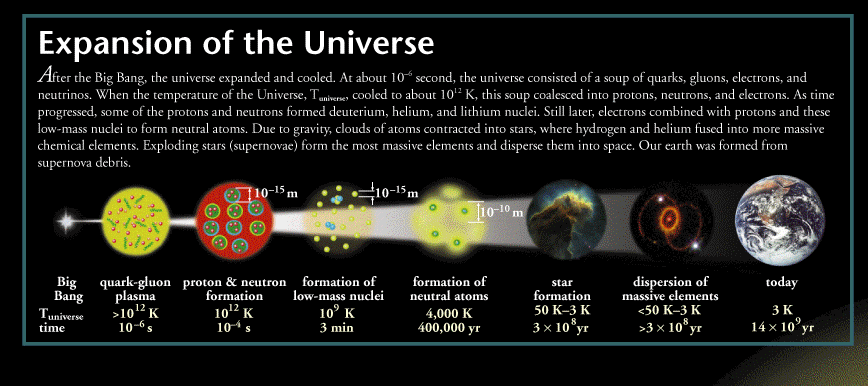 No. God is another word for the intimate linkage between and among all things, from the smallest gluon to the largest star. God is neither a superparent nor a cosmic Santa Claus writing down your behaviors in the book of deeds; God is a metaphor for the sacred knowledge which permeates the perceivable, and the unperceivable, world.
No. God is another word for the intimate linkage between and among all things, from the smallest gluon to the largest star. God is neither a superparent nor a cosmic Santa Claus writing down your behaviors in the book of deeds; God is a metaphor for the sacred knowledge which permeates the perceivable, and the unperceivable, world.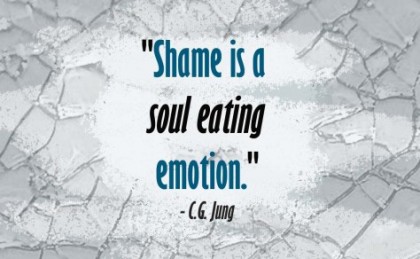 Shame. It’s a quiet burning just under the skin, a turning of the inner face away from the self, embarrassed. What have I done? I suppose its power comes in the possibility that the person who acted like this could be the “real” me. And, it doesn’t have to be an egregious act to call it up.
Shame. It’s a quiet burning just under the skin, a turning of the inner face away from the self, embarrassed. What have I done? I suppose its power comes in the possibility that the person who acted like this could be the “real” me. And, it doesn’t have to be an egregious act to call it up.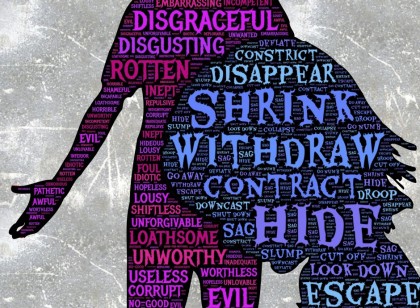 Getting to the point here. I’m a student, probably since my first conscious thought. How the world works fascinates me. History, too. Literature. Art. Religion. Philosophy. Politics. Last night for example, before I went to sleep, I focused on my breath as I often do. I began to wonder, “OK. I know about inspiration, the lungs take in air, blood in the lungs binds the oxygen to the hemoglobin. But what about expiration? How does that work? Where do the exhaust gases, the carbon dioxide, come from? How do they get expelled? Why don’t the two processes interfere with each other?” Still don’t know the answer, btw, but I’m going to ask Kate at breakfast.
Getting to the point here. I’m a student, probably since my first conscious thought. How the world works fascinates me. History, too. Literature. Art. Religion. Philosophy. Politics. Last night for example, before I went to sleep, I focused on my breath as I often do. I began to wonder, “OK. I know about inspiration, the lungs take in air, blood in the lungs binds the oxygen to the hemoglobin. But what about expiration? How does that work? Where do the exhaust gases, the carbon dioxide, come from? How do they get expelled? Why don’t the two processes interfere with each other?” Still don’t know the answer, btw, but I’m going to ask Kate at breakfast. I shrank back in my chair, at least metaphorically, vowing, again, to keep my hand down. To keep that curiosity publically in check. To filter my thoughts, about whether they need to be expressed. Hard for me. I’m eager when it comes to learning and part of learning is bouncing ideas off each other. But there’s that balance idea, the sweet spot between curiosity and taking up too much space, the need to honor the contributions and questions of others, to not privilege my own at other’s expense.
I shrank back in my chair, at least metaphorically, vowing, again, to keep my hand down. To keep that curiosity publically in check. To filter my thoughts, about whether they need to be expressed. Hard for me. I’m eager when it comes to learning and part of learning is bouncing ideas off each other. But there’s that balance idea, the sweet spot between curiosity and taking up too much space, the need to honor the contributions and questions of others, to not privilege my own at other’s expense. The tree of life, the tree of immortality guarded by the angel with the flaming sword; the tree itself still growing in paradise, concealed by language, by our senses, by the everydayness of our lives; the path back to the garden often forgotten, the exile from paradise a separation so profound that we no longer know the location of the trail head and even harder, we no longer have a desire to search for it.
The tree of life, the tree of immortality guarded by the angel with the flaming sword; the tree itself still growing in paradise, concealed by language, by our senses, by the everydayness of our lives; the path back to the garden often forgotten, the exile from paradise a separation so profound that we no longer know the location of the trail head and even harder, we no longer have a desire to search for it. But here’s the trap. Metaphor, of course! I studied philosophy, religion, anthropology in college. Then, after a few years stuck in unenlightened instinctual behavior-the storied sex, drugs and rock and roll of the sixties and seventies-I moved to seminary. The trap tightened. I learned about the church, scripture old and new, ethics, church history. It was exhilarating, all this knowledge. I soaked it up. I remained though stuck in the intellectual triad, pushing back and forth between the polarity of intuitive wisdom, hochmah, and analytical thought, binah, often not going on to daat, or understanding. I learned, but did not integrate into my soul.
But here’s the trap. Metaphor, of course! I studied philosophy, religion, anthropology in college. Then, after a few years stuck in unenlightened instinctual behavior-the storied sex, drugs and rock and roll of the sixties and seventies-I moved to seminary. The trap tightened. I learned about the church, scripture old and new, ethics, church history. It was exhilarating, all this knowledge. I soaked it up. I remained though stuck in the intellectual triad, pushing back and forth between the polarity of intuitive wisdom, hochmah, and analytical thought, binah, often not going on to daat, or understanding. I learned, but did not integrate into my soul. My heart knew I had gotten lost, in exile once again. In Dante’s words in Canto 1 of the Divine Comedy:
My heart knew I had gotten lost, in exile once again. In Dante’s words in Canto 1 of the Divine Comedy: At the time of its crumbling another path had begun to open for me. Fiction writing emerged when, ironically, I began writing my Doctor of Ministry thesis. Instead of working on it I ended up with 30,000 plus words of what would become my first novel, Even The Gods Must Die. Irony in the title, too, I suppose.
At the time of its crumbling another path had begun to open for me. Fiction writing emerged when, ironically, I began writing my Doctor of Ministry thesis. Instead of working on it I ended up with 30,000 plus words of what would become my first novel, Even The Gods Must Die. Irony in the title, too, I suppose. Even so, I sat behind the barrier, the flaming sword, the metaphor trap. Beth Evergreen and Rabbi Jamie Arnold have started me on a journey back to where I began, immersed in the dark. Seeking for the light, yes, but happy now in the darkness, too. The Winter Solstice long ago became my favorite holiday of the year.
Even so, I sat behind the barrier, the flaming sword, the metaphor trap. Beth Evergreen and Rabbi Jamie Arnold have started me on a journey back to where I began, immersed in the dark. Seeking for the light, yes, but happy now in the darkness, too. The Winter Solstice long ago became my favorite holiday of the year. But. At Beth Evergreen I have begun to feel my way back into the fourth triad, the mystery I first encountered on the hard wooden pews in Alexandria, the one pulsing behind the metaphors of tenebrae, of crucifixion, of resurrection, and now of Torah, of language, of a “religious” life. I knew it once, in the depth of my naive young boy’s soul. Now, I may find it again, rooted in the old man he’s become.
But. At Beth Evergreen I have begun to feel my way back into the fourth triad, the mystery I first encountered on the hard wooden pews in Alexandria, the one pulsing behind the metaphors of tenebrae, of crucifixion, of resurrection, and now of Torah, of language, of a “religious” life. I knew it once, in the depth of my naive young boy’s soul. Now, I may find it again, rooted in the old man he’s become. Three nights in a row at Beth Evergreen. Challenging for this early to bed, early to rise guy. Though. Kabbalah fascinated me. I’m beginning to feel my way into the occult, again. The hidden wonders. This time around I may be able to actually hold at arm’s length the cultural vehicles and not resist the message because of the messengers. That is, kabbalah, in particular, has a poetic, evocative, confounding approach that speaks to my sense of absurdity. And, my in but not of relationship to Judaism also allows me a critical distance that I find very helpful.
Three nights in a row at Beth Evergreen. Challenging for this early to bed, early to rise guy. Though. Kabbalah fascinated me. I’m beginning to feel my way into the occult, again. The hidden wonders. This time around I may be able to actually hold at arm’s length the cultural vehicles and not resist the message because of the messengers. That is, kabbalah, in particular, has a poetic, evocative, confounding approach that speaks to my sense of absurdity. And, my in but not of relationship to Judaism also allows me a critical distance that I find very helpful. This story works for me. The imagery is something I can relate to because I’m human. Honor is so important and so often gotten wrong. Think, for example, about the instance of DJT honoring America First; just as Kim Jong Un honors himself and North Korea first. Or the gang member who feels dissed, disrespected, dishonored. A sense of kavod would have prevented the shooting in Las Vegas, the holocaust. It would prevent child abuse and domestic violence. Harming another whose dignity and respect is as worthy as your own is just not possible.
This story works for me. The imagery is something I can relate to because I’m human. Honor is so important and so often gotten wrong. Think, for example, about the instance of DJT honoring America First; just as Kim Jong Un honors himself and North Korea first. Or the gang member who feels dissed, disrespected, dishonored. A sense of kavod would have prevented the shooting in Las Vegas, the holocaust. It would prevent child abuse and domestic violence. Harming another whose dignity and respect is as worthy as your own is just not possible.